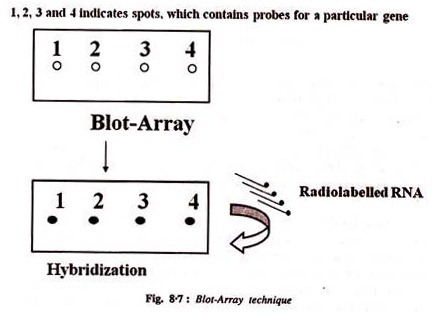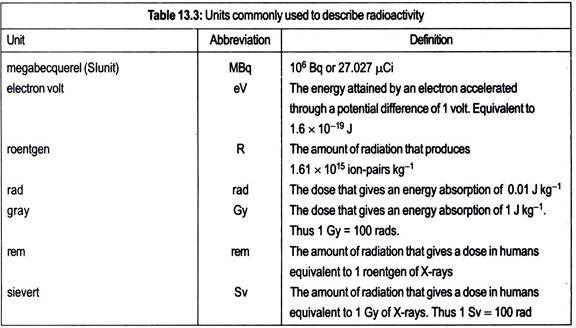Some of the most important characters of fungi are as follows:
1. Occurrence 2. Thallus organization 3. Different forms of mycelium 4. Cell structure 5. Nutrition 6. Heterothallism and Homothallism 7. Reproduction 8. Classification of Fungi.
1. Occurrence:
Fungi are cosmopolitan and occur in air, water soil and on plants and animals. They prefer to grow in warm and humid places. Hence, we keep food in the refrigerator to prevent bacterial and fungal infestation.
2. Thallus organization:
Except some unicellular forms (e.g. yeasts, Synchytrium), the fungal body is a thallus called mycelium. The mycelium is an interwoven mass of thread-like hyphae (Sing, hypha). Hyphae may be septate (with cross wall) and aseptate (without cross wall). Some fungi are dimorphic that found as both unicellular and mycelial forms e.g. Candida albicans.
3. Different forms of mycelium:
(a) Plectenchyma (fungal tissue):
In a fungal mycelium, hyphae organized loosely or compactly woven to form a tissue called plectenchyma.
It is two types:
i. Prosenchyma or Prosoplectenchyma:
In these fungal tissue hyphae are loosely interwoven lying more or less parallel to each other.
ii. Pseudoparenchyma or paraplectenchyma:
In these fungal tissue hyphae are compactly interwoven looking like a parenchyma in cross-section.
(b) Sclerotia (Gr. Skleros=haid):
These are hard dormant bodies consist of compact hyphae protected by external thickened hyphae. Each Sclerotium germinates into a mycelium, on return of favourable condition, e.g., Penicillium.
(c) Rhizomorphs:
They are root-like compactly interwoven hyphae with distinct growing tip. They help in absorption and perennation (to tide over the unfavourable periods), e.g., Armillaria mellea.
4. Cell structure:
Fungal cell wall composed of chitin (fungal cellulose, C22H54N4O21). In primitive fungi true cellulose with or without chitin found. Plasma-lemma bears occasional coiled ingrowths called lomasomes which lie below cell wall. Cytoplasm contains organelles (Endoplasmic reticulum, mitochondria, ribosome, Golgi bodies etc.) and inclusions (stored foods, pigments and secretory granules).
The cytoplasm at hyphal tip contains Golgi vesicles called chitosomes which filled with cell wall materials. Nucleus and mitochondria are found to connect with ER. Nucleus divides by intracellular mitosis called karyochoresis where nuclear envelop remain intact during nuclear division and internal spindle develop. Reserve food is glycogen and oil.
5. Nutrition:
The fungi lack chlorophyll. Therefore, they cannot synthesiz their own food.
Depending on from where and how they get nutrition, fungi are of following types:
(a) Saprotrophs (= saprobes):
They obtain food from dead and decaying organic matter. They secrete digesting enzymes to outside which digest the substratum and then absorb nutrients, e.g., Mucor, Agarious. Rhizopus (bread mould) etc.
(b) Parasitic:
They obtain food from living .They maybe facultative or obligate. Facultative parasites grow on a variety of tissues and often cause ‘soft rot’ of the tissue, e.g., Ustilago. The obiigate- parasites absorb through specialized haustoria. The parasitic fungi that grow on surface of host cells and absorb food through haustoria are called ectoparasites or ectophytic parasites (e.g., Mucor, Erisphae). When parasitic fungi grow inside the host tissue arc called endoparasites or endophytic parasites (e.g., Pythium, Puccinia).
(c) Predacious:
Some soil fungi develop ring-like noses to trap annelids, nematodes etc. e.g., Arthrobotrys, Zoophagus, Dactylella etc.
(d) Symbiotic:
They live in mutualistic relationship with another organism by which both are benefited. The two common examples are lichens and mycorrhiza. Lichens are symbiotic associations between fungi and algae. The fungal partner is a member of ascomycetes or basidiomycetes that provides water and nutrients, while the algal partner is a green alga or cyanobacteria that prepares food by photosynthesis.
Mycorrhizas or mycorrhizae (fungus roots in Greek) are the mutualistic symbiotic associations between soil fungi and the roots of most plant species (95% of all plant families are predominantly mycorrhizal). According to the carbohydrate theory (Bjorkman, 1949), the plants that grow in soils deficient in P and N, and high intensity light develop mycorrhizas.
The two most common types of mycorrhizas are the ectomycorrhizas (ECM) and the endomycorrhizas (also known as arbuscular mycorrhiza, AM or VAM). The two groups are differentiated by the fact that the hyphae of ectomycorrhizal fungi do not penetrate the cell wall of the plant’s root cells, while the hyphae of arbuscular mycorrhizal fungi penetrate the cell wall.
6. Heterothallism and Homothallism:
A. F. Blakeslee (1904) discovered mating types or genetically distinct strains in Mucor. He called fungi with different mating types are called heterothallic and fungi without mating types are called homothallic. Nowadays we call some fungi and algae homothallic if both male and female gametes produce in the same individual can fertilize each other and heterothallic if the gametes can only be fertilized by gametes from another individual of the same species. Heterothallism introduces variations in the species.
7. Reproduction:
Like most other thallophytes, fungi also reproduce by vegetative, asexual and sexual means. However, asexual reproduction is generally predominant Depending upon the involvement of the entire thallus or a part of it, the fungi may be holocarpic or eucarpic.
(i) Holocarpic:
In this category of fungi the entire thallus gets converted into one or more reproductive bodies. Hence, the vegetative and reproductive phase can never occur at the same time.
Most of the fungi are eucarpic. Here only a part of the thallus is involved in the development of reproductive organs and remaining thallus remains vegetative. In eucarpic fungi, vegetative and reproductive phases exist at the same time.
A. Vegetative Reproduction:
In this type of reproduction, a part of mycelium separate and forms a new individual. The various methods of vegetative reproduction are— fragmentation, budding, fission, sclerotia, rhizomorphs and oidia formation. In case of Rhizopus and Coprinus the hyphae break up into numerous fragments called oidia, each of which give rise to a new mycelium.
B. Asexual Reproduction:
It commonly occurs through spores, either motile or non-motile and form in a specialized part of mycelium. The various types of spores are: zoospores, sporangiospores (=aplanospores), conidia, oidia (arthrospores), chlamydospores, gemmae, ascospores, uredospores, basidiospores etc.
C. Sexual Reproduction:
It involves the formation and fusion of gametes. Sexual reproduction found in all groups of fungi except deuteromycetes or fungi imperfecti. Sexual reproduction has three distinct phases i.e. plasmogamy (protoplasmic fusion), karyogamy (fusion of nuclei) and meiosis (reduction division of zygote).
The various methods of sexual reproduction in fungi are as follows:
(i) Planogametic copulation:
This is simplest type of sexual reproduction. In this process fusion of two gametes of opposite sex or strains takes place where one or both of the fusing gametes are motile (flagellated). It results in the formation of a diploid zygote.
This process is usually of three types:
(a) Isogamy:
In this process fusing gametes are morphologically similar and motile but physiologically dissimilar. These gametes are produced by different parents e.g. Synchytrium.
(b) Heterogamy:
When the fusing gametes are morphologically as well as physiologically different, the process is known as heterogamy. Heterogamous reproduction is of two types: anisogamy and oogamy. Anisogamy consists of the fusion of two motile gametes where the male gamete is small and more active than the female gamete, e.g., Allomyces. In oogamy the motile male gamete (antherozooid) fuses with the large, non-motile female gamete (egg or ovum), Monoblepharis, Synchytrium etc.
(ii) Gametangial contact:
In this process two gametangia of opposite sex come in contact with one another. The male gametangium (antheridium) transfer male nucleus or gamete into the female gametangium (oogonium) either through a pore at the point of contact or through a fertilization tube, e.g., Phytophthora, Sphaerothera, Alb. go, Pythium etc.
(iii) Gametangial copulation:
In involves the fusion of entire contents of two gametangia to form a common cell called zygote or zygospore, e.g., Mucor, Rhizopus.
(iv) Spermatization:
Some fungi produce many minute, spore-like, single-celled structures called spermatia (nonmotile gametes). These structures are transferred through agencies like water, wind and insects to either special receptive hyphae or trichogyne of ascogonium. The contents migrate into receptive structure. Thus dikaryotic condition is established, e.g. Puccinia.
(v) Somatogamy:
This takes place in fungi where formation of gametes is absent. In such fungi, anastomoses takes place between hyphae and their somatic cells fuse to produce dikaryotic cells, e.g, Agaricus, Peniophora etc.
8. Classification of Fungi:
Fungi are classified on the basis of morphology of the mycelium spore formation, fruiting bodies and mode of life cycles. Martin’s (1995) classification of fungi is the most prevalent one.
He classified fungi into 3 subdivisions:
1. Schizomycetes (Bacteria)
2. Myxomycetes (Slime moulds)
3. Eumycetes(True fungi)
Myxomycetes:
These include about 600 species of free living slime moulds which are now considered as consume r-decomposer protists or protistan fungi. They grow in damp places. The thallus resembles amoeba, hence these tungi is also myxamoeba. They are holocarpic i.e. the entire thallus gets converted into reproductive body. They reproduce asexually by fission or cysts and sexually by zoospores. The thallus of slime moulds exists in two forms – acellular slime mould (plasmodium) and cellular slime mould (pseudoplasmodium).
Plasmodium is a wall-less mass of multinucleate protoplasm, e.g. Physarum, Didymium, Fuligo etc. At maturity plasmodium develops stalked sporangia tilled with spores and a network of protoplasmic threads called capillitium. A pseudo plasmodium is an aggregate of individual amoeboid cells, e.g. Dictyostelium.
Phycomycetes (Algal fungi):
The members are considered as lower fungi (over 1700 species), found in aquatic and semi-aquatic forms. They include both unicellular and mycelial forms. Mycelium is aseptate and coenocytic. Sporangia produce asexual spores i.e. zoospores (ciliated) and aplanospores (non-ciliated). In sexual reproduction, zygospores form by fusion of similar (isogamy) or dissimilar (anisogamy or oogamy) gametes. Examples: Mucor, Rhizopus, (bread mould), Albugo (cause white rust of crucifers) etc.
Ascomycetes (Sac fungi):
These include over 30,000 species unicellular and multi-cellular fungi. Asexual spores develop exogenously in form of chains called conidia. Sexual spores are endogenous ascosp ores that develop in a sac like ascus. The fruiting body containing asci is called ascocarp. Examples: yeasts, Penicillium, Aspergillus, Clavicep (ergot fungi), Neurospora, Peziza.
Basidiomycetes (Club fungi):
These include over 25,000 species of mushrooms, puffballs, rusts, smuts, toad stools etc. The club-shaped end of reproductive hypha is called basidium which alter meiosis develops four exogenous asexual spores called basidiospores. The basidia arranged in a fruiting body are called basidiocarp. Examples: Agaricus (edible mushrooms), Puccinia (Rust fungi), Ustilago (Smut fungi), Polyporus (Bracket fungi), Candida etc.
Deuteromycetes (imperfect fungi):
It includes about 17,000 species of fungi where sexual or perfect stage absent and only asexual or vegetative stages are known. Some asexual structures are synnema, pyenidia, accrvulii, sporodochium etc. Most of them are decomposers while some are saprophytes or parasites. They reproduce only asexually by means of conidia which are very similar to conidia of ascomycetes. Examples: Alternaria, Helminthosporium, Collectotrichum, Trichodenna etc.







